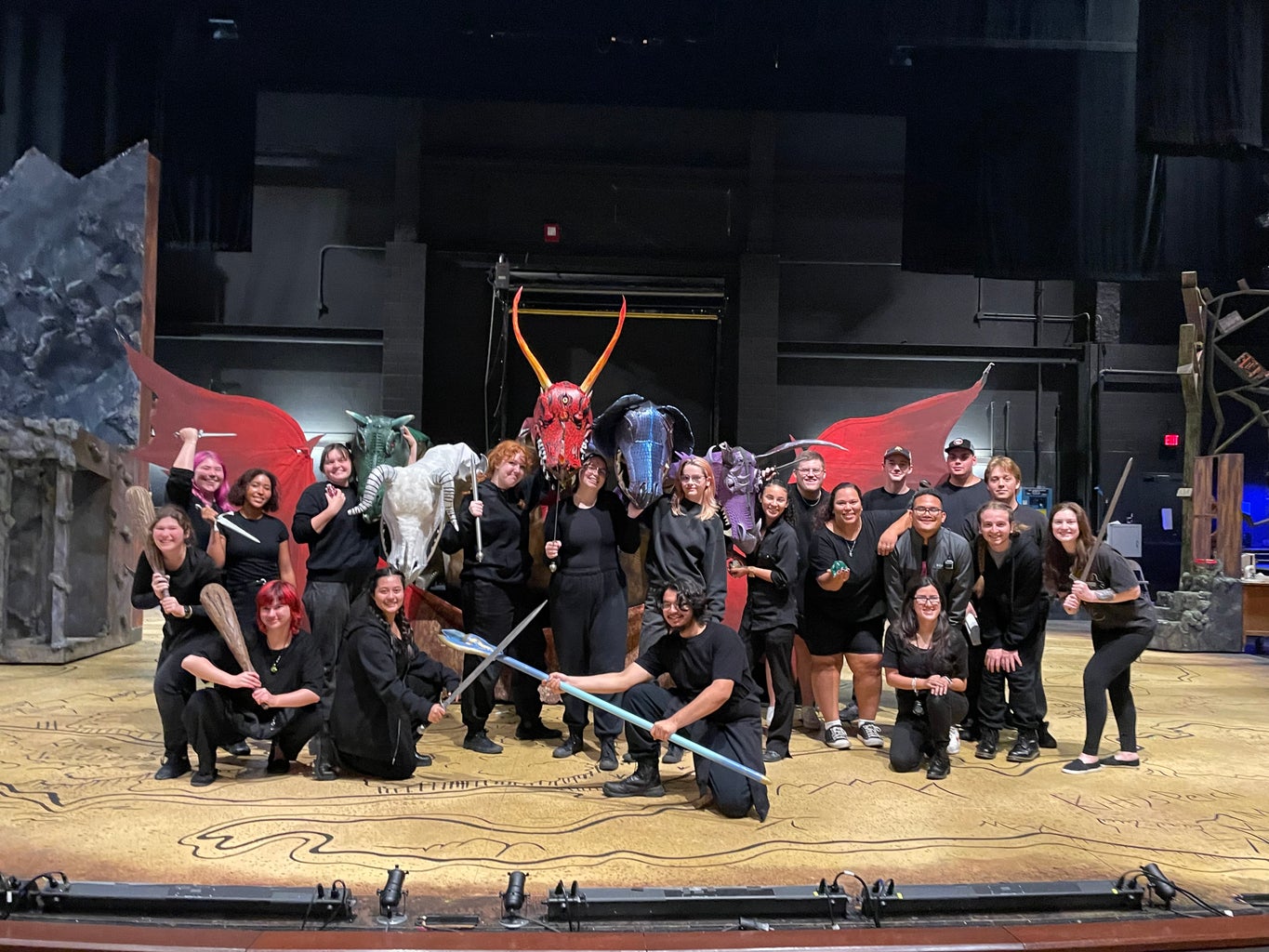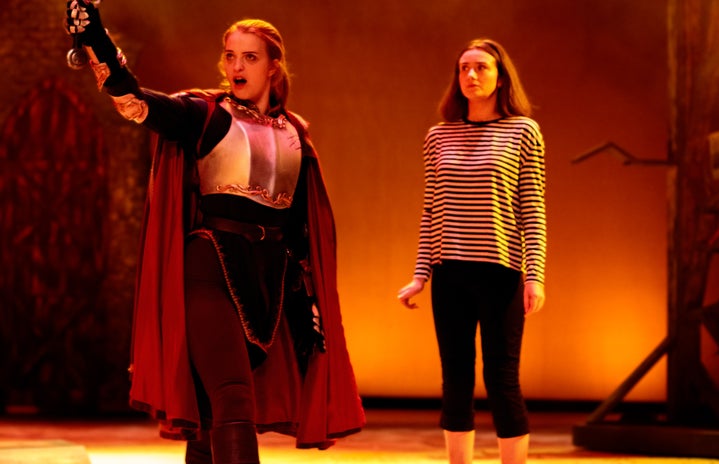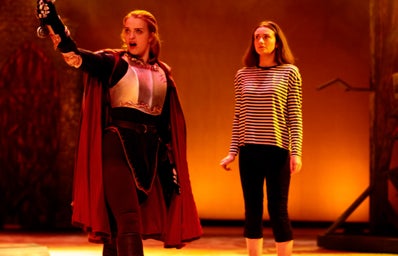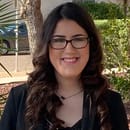As the school year has been in full swing, the theatre students of Texas State University have fully kicked off the 2023-2024 season with their first main stage production of the play She Kills Monsters by playwright, Qui Nguyen. This performance showcases the process of grief and the bonding between sisters as the protagonist, Agnes Evans learns about her younger sister Tilly through the chaotic, mystical, and adventurous game of Dungeons and Dragons.
I had the opportunity to speak with multiple people from this production, including Production Stage Manager, Oscar Hough, Hatlyn Barricklow (Agnes Evans), and Shelby Breda (Evil Gabbi), and ask them about their various experiences throughout the process of working on this project.
Additionally, I include my personal experience of working on this production, as I was assigned as the sound board operator as the show began to incorporate its highly anticipated technical elements.
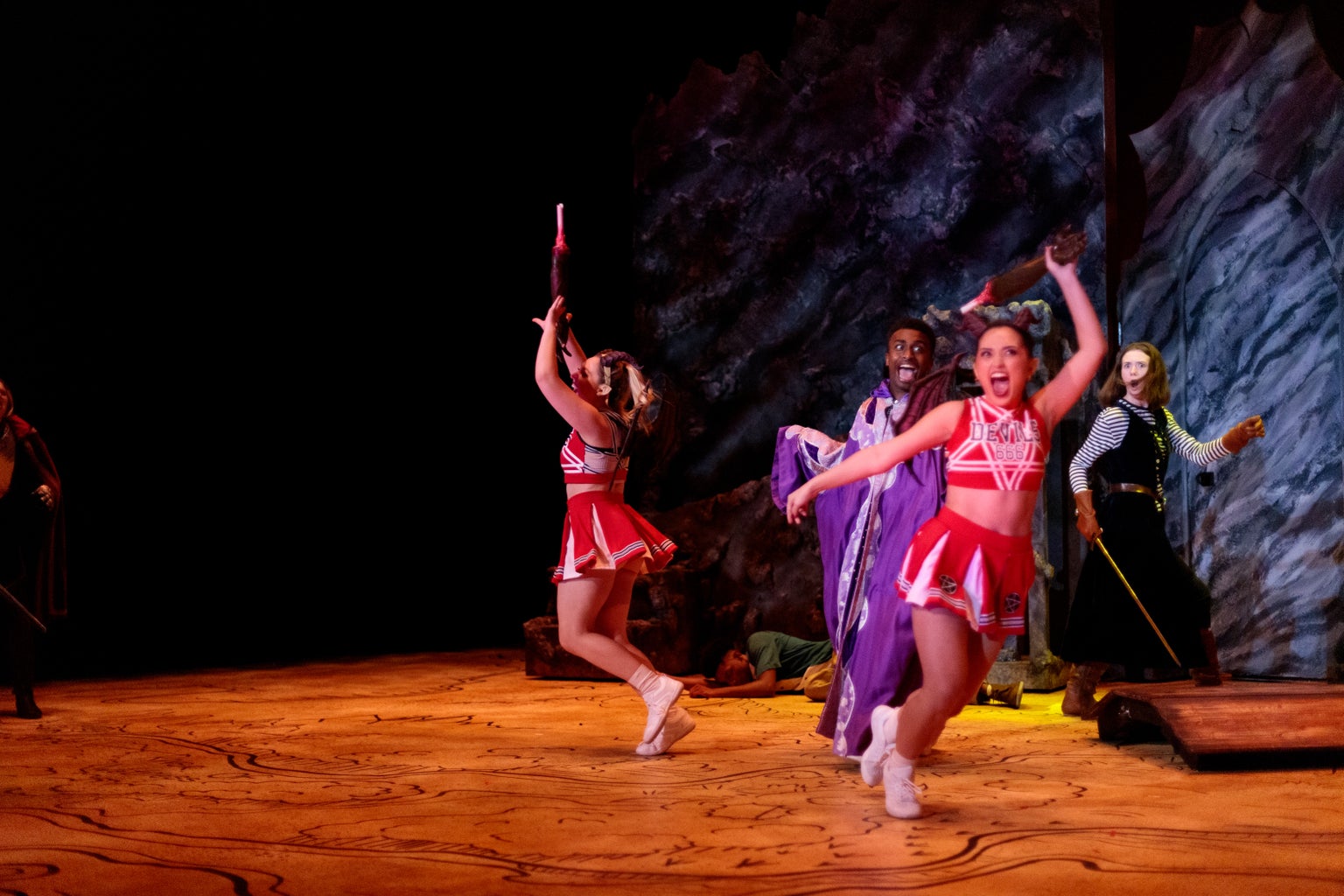
HC: What was the most challenging part of your experience when working on this production?
OH: One of the most challenging parts of the production … a lot of it was just getting to know a lot of the new faces that I was working with on the show. I don’t have a say in what crew I get for a show, but … this production, She Kills Monsters had maybe somewhere between 10 to 15 crew members. It was a pretty big amount of crew members from deck crew to costume to sound and so on. It’s all new faces and it’s building that trust. So, I think that was one of the challenges for me was just trying to build that trust with everyone, to make sure that I can be trusted with them.
HB: I would say the genre of the play itself is very difficult for me because you’re balancing this very… grief-stricken narrative with the fun and the campiness of it, and so trying to show those like really intense emotions and grief while also feeding into the humor of the play… But also like letting Agnes be Agnes next to all of these very huge characters. It was just a big struggle, like trying to find that dynamic between serious and funny and normal and abnormal. And then also tracking her progress as she goes through that. Because she becomes… more accepting and she becomes a little less afraid of being silly. She was never like in stasis during any scene. I feel like… there was growth and that made me have to approach every scene differently depending on what point she was at.
SB: The most challenging part of my experience was probably just how much we were doing every day. Immediately after the first rehearsal, we jumped right into stage combat, so we would be able to get it in our bodies, and do it every day. The first thing we would do before running the show during tech was a fight call, where we would rehearse the fights at 50%, and then at 80%. Fight call would normally last 30 minutes to an hour on some days, so while it was a great way to get warmed up, it was also pretty taxing on our energy when we needed to run the entire show afterwards.
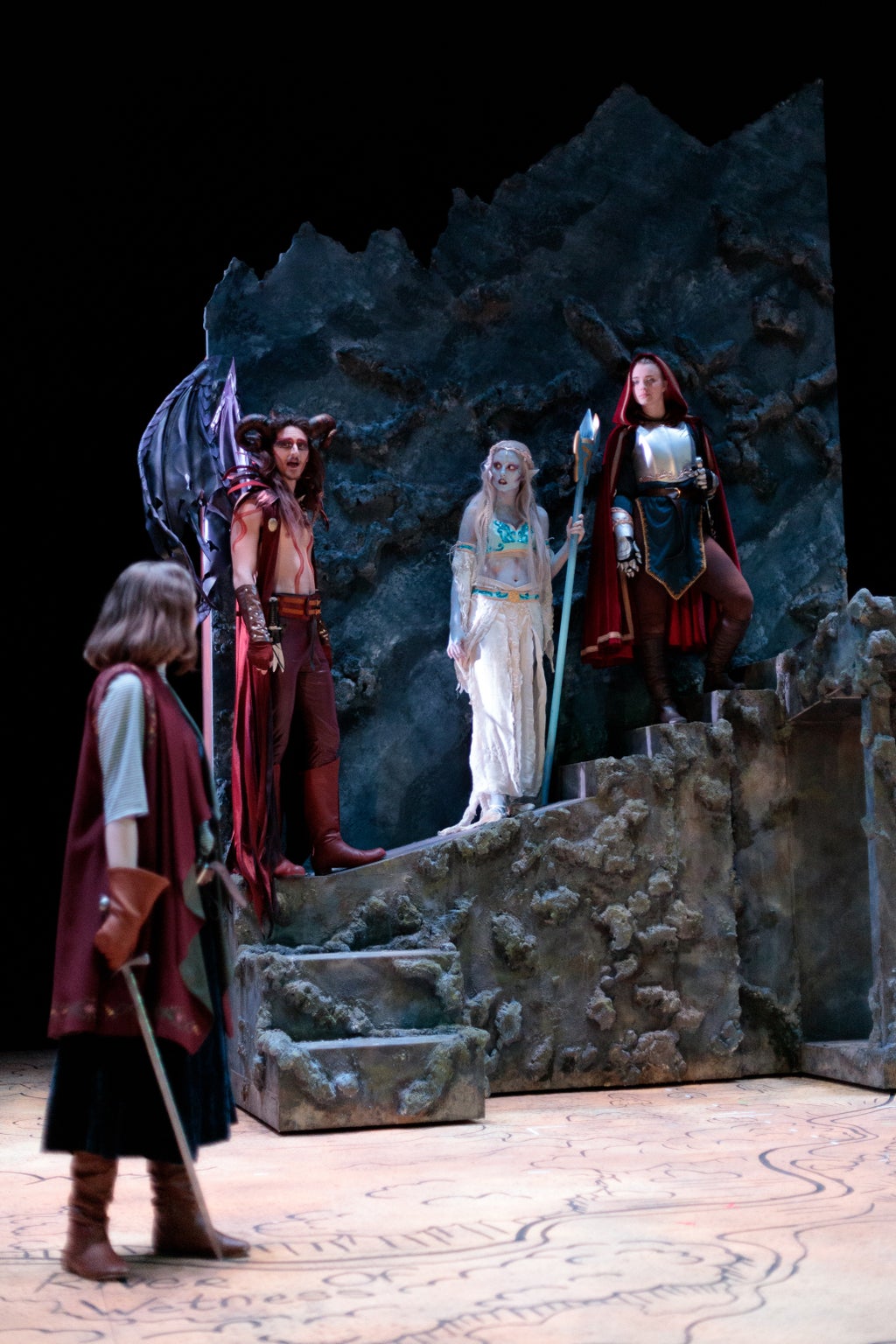
HC: What would you say is your biggest takeaway from this process?
OH: My biggest takeaway, I would have to say just … being grateful for what we have… I’m grateful to have such an amazing support system that got me through the show. And there were challenges and stuff that I definitely couldn’t manage on my own, but having such a great support system is what got me through the show.
HB: Oh my gosh, my biggest takeaway, oddly enough, was how much theatre can impact people. I knew that the story would have an impact because people come to see theatre to be impacted by it and to get a message. But I was really pleasantly surprised by how many people approached me after the show. There were people who had lost siblings of their own that talked to me about how much it meant to them. Then, there was someone whose sibling had just come out as trans three days prior, and they were really impacted by the show and really sympathized with Agnes and the position she was put in. The biggest takeaway is just that these stories really do matter. And this is a show that I think it can kind of be cast aside by a lot of people because it’s, you know, a traditional like UIL OAP (University Interscholastic League One Act Play) show that you would see done in middle school and high school. But, this show has been around for a long time for a reason, and it’s still getting done for a reason.
SB: My biggest takeaway from having worked on this process is how to get things done quickly and efficiently. We only had about six weeks to put on this monster of a show, which included getting our costume fittings, altering the costumes, blocking, fights, character work, scene work, tech week and working around all the technical elements, and finally settling into how to work on the Harrison stage with all the technical elements around us. I learned a lot about how to keep actors energized and excited about the work we are doing, and how to get things done quickly and efficiently.
HC: What do you personally feel like you learned from your time spent working on this process?
OH: Something I learned from this process … it’s how to deal with so many moving parts on a show… and a lot of it is happening in real time… It takes a circus.
HB: I’ve learned a lot about sisterhood. I’m an only child, so I really didn’t have any other understanding of it going in. But there is something about having a sister that’s just different and it’s indescribable. And obviously I can’t understand it because I don’t have one. But I feel like I’ve begun to understand that bond. It’s … more than friends, but obviously not romantic. I feel like that goes without saying. It’s just this type of familial love that I’d never encountered before… And it also just makes me view other people in my life more differently. I have like friends who have multiple sisters or who are twins, and I just view them so differently now because I’m like, ‘oh my God, you grew up with other children and this really did impact you and your own relationships with your siblings…’ I just feel like I have a whole new perspective on the world that I just didn’t have because I’d never had another kid to grow up with, so I just didn’t think about it.
SB: I have learned a lot from being a part of this experience, specifically in how to do character work in character roles. A lot of the time, it is easy to assume that character roles are not very deep, and the character work goes by very quickly. As one of the cheerleaders in this production, it was easy to assume that the character work would be super easy because they are just mean. While some parts were easy, especially in the D&D (Dungeons & Dragons) world, we still had to create a character outside of the fantasy world that is compelling, and who has their own motives. I learned that even as a character role who seems super shallow and mean, the character work isn’t always super easy.
HC: How do you think the audience perceived everything that went on?
OH: Oh, I think the audience perceived everything very well. Every night, the audience was so receptive of jokes that we didn’t think would be funny, or lines and moments that we didn’t think would get laughed at, but we did….Once you realized that those were laughing moments everyone … jumped in and had a good time…I think I was appreciative of the audience every night cheering for the dragons because I know the challenges that we faced getting the dragon on stage…. and then knowing how hard it was sometimes to get the dragon [on and off the stage]… then to have the audience support us in such a great way by cheering and clapping for the dragon. The applause came on like it was a really big deal.
HB: It was really well taken. People loved the gaudiness of it, the campiness. Obviously in a theater like the Patty, [Performing Arts Center] you can’t hide all of the stage combat moves, but, so you can see …there’s gaps between people’s punches and slaps and, especially me, swiping the dragon, but no one was really off put by it. Like…it almost just made it more D&D cause it’s clearly fake, but like it’s real when you’re in the moment. It was just really, really well received. And I think that we kind of nailed it in terms of balancing the comedy and the drama of it. And I think it just encouraged people to be, you know, we are a very accepting department, but there are unspoken battles that people are going through every day. So even if it doesn’t extend to sexuality, even if it’s in a different context, I think that it probably just gave the audience a reminder that there’s always something going on underneath everyone’s surface that we probably don’t know about. So it’s important to just be respectful and be really kind and compassionate and understand that even if it’s not your cup of tea, people still have their interests.
SB: I think the audience really loved the final product. When I walked out of the dressing room every night, I was met with lots of people telling me they cried, got angry, and felt the grief right along with us. That made me super happy, and that part of the process always reminds me why I do theatre.
My Personal Experience on “She Kills Monsters”
I was lucky enough to personally work on this production, as I am also a theatre and dance major. Along with about 15 other students, I was assigned to serve as crew members for this production. My role was to assist as the sound board operator, meaning I would control when the sound and music cues are played after being given directives by our production stage manager, Oscar. I was trained on how to run the sound program ‘QLab’ which is what sound designer Brooke Sauerwein used to edit all the sound and music cues in the play.
My experience working on this show was different from others because I was brought in with only two weeks left in the process. The part I found the most fun was getting to fully watch the show each night during performances. Tech week is notoriously regarded by those in theatre as one of the more stressful and challenging times of a production. And She Kills Monsters was nothing far from challenging. However, I found this intense time of rehearsal made the full performances worth every minute. When watching this show, I could not help but be immersed in both the real and mystical worlds within the story. My favorite part was seeing each piece of the world come together with every scene change as we saw all of the technical elements fully at work.
What was most challenging for me was making sure I performed my part exactly right each time I was called. In live theatre, timing is essential to everything that makes a performance stand out. In a show like She Kills Monsters, that is especially true whether that be in places of very high energy like the fight scenes with multiple actors, or the shifts between music as the “real” and “Dungeons and Dragons” world were constantly changing. My role was an integral part of the show, as I helped control what the audience and characters would be hearing in each vastly different scene of the performance. It was hard at times to ensure I was ready when I heard Oscar’s calling of numerous cues including sound, lighting, deck crew and the rigging system, as I had to focus and pay attention to my specific cue number.
The biggest thing I took away from my experience of this production was getting to interact with so many new people. Coming in as a transfer student meant I was still very new to Texas State’s theatre program. Having the opportunity to work on this show as my first glimpse into the department was very fun as I met so many new friends during the long hours of both rehearsals and performances. Both inside and outside of working on this show, everyone has been so incredibly welcoming.
I learned so much about myself and my capabilities within my short time on this production. I was given the opportunity to go outside my comfort zone and learn a new skill as a technician. It was so great to be given the space and access to explore something I had not previously worked with as everyone worked together to perfect their role in preparation for performances.
From both behind the scenes and directly inside them, the production of She Kills Monsters was truly unforgettable. During its run, this show had extraordinary, action-filled, and heartfelt performances that told a beautiful story. Stories have something special about them that connect people. For those who are involved in the art theatre, or of pure storytelling, this connection happens from the very first reading of the piece, and it lasts all throughout the process until its final closing moments. Everyone involved with this play: actors, designers, crew members, and the audience, went on a quest to relive adventuring with their groups of friends while bonding with those who matter most. And they treasured every moment of chaos, humor, and love along their journey.
